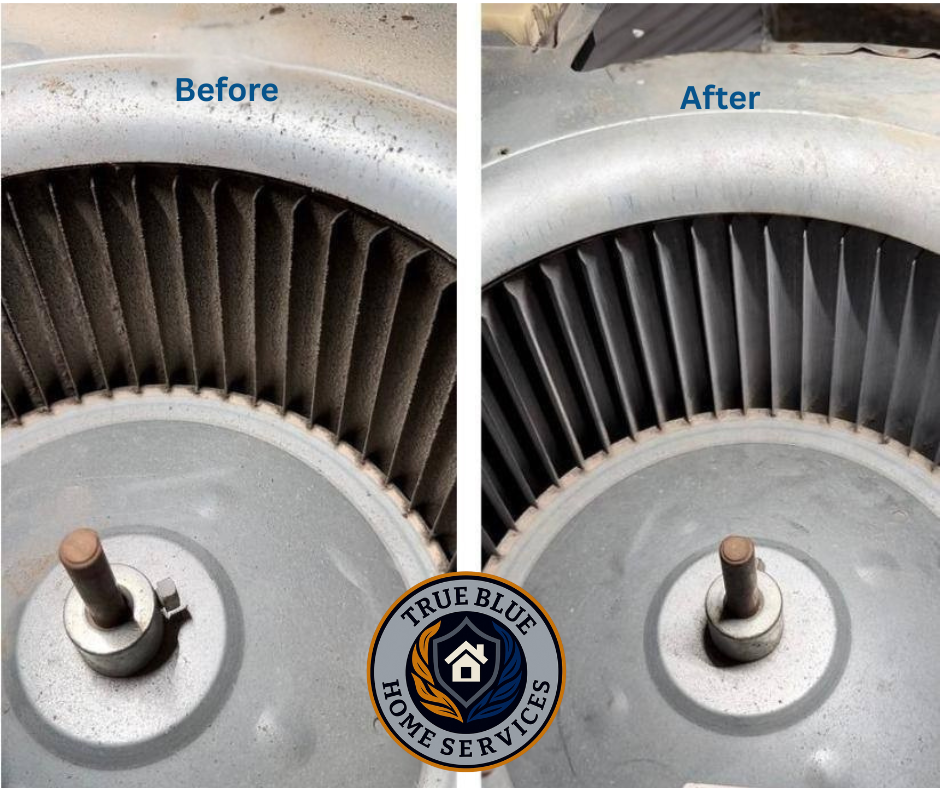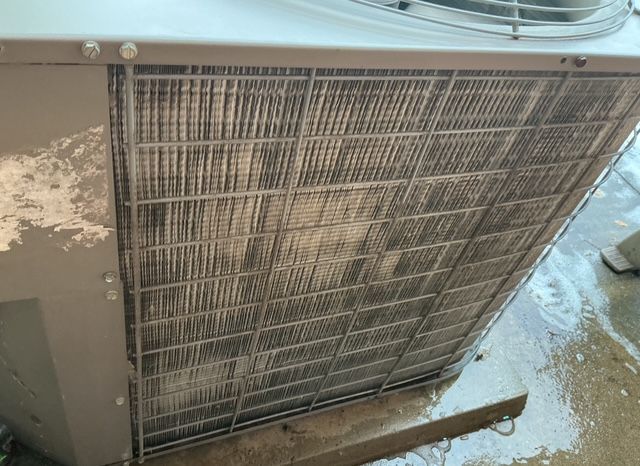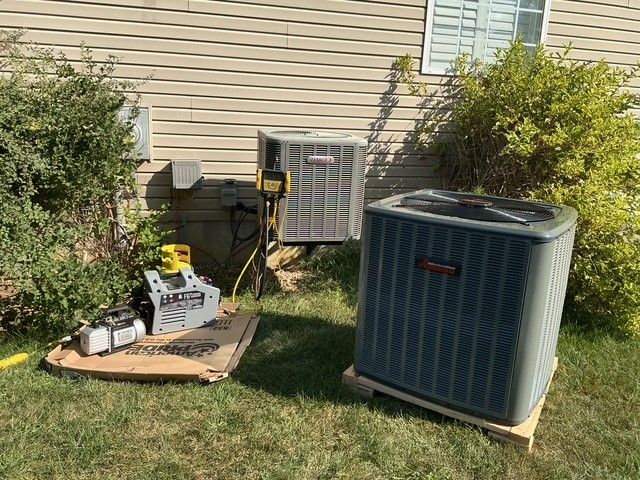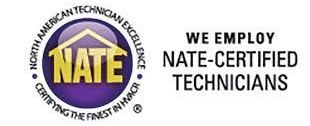Save Energy and Stay Warm: The Importance of a Clean Blower Wheel
Is Your Furnace Working Overtime?
Your Blower Wheel Might Be to Blame!

Why, a Dirty Furnace Blower Motor Can Cost You More Than You Think
True Blue Home Services
Serving St. Charles County & St. Louis County, MO
Your furnace’s blower motor is one of the most critical components of your HVAC system. When it’s dirty, it can quietly cause reduced efficiency, higher energy bills, and even system failure. True Blue Home Services explains why keeping your blower clean is essential, how to spot warning signs, and what you can do about it.
Did You Know?
A dirty blower wheel can affect the performance of your furnace or air conditioning system. The buildup of debris on the blades reduces airflow, forcing the motor to work harder. This leads to:
- Increased power draw
- Reduced motor lifespan
Cleaning the blower assembly can prolong the life of your furnace or AC components, and regular maintenance, including frequent filter replacement can prevent costly repairs. The added bonus is better air quality in your home!
Within the Intricate Matrix: Understanding the HVAC Blower Wheel
Within your home’s HVAC system lies an essential, yet often underestimated component: the HVAC blower wheel. This small part plays a gigantic role in maintaining your home’s cozy ambiance, ensuring air flows seamlessly throughout.
Definition and Function
The blower wheel consists of several meticulously placed blades or fins. Its rotation, powered by the blower motor, ensures even air distribution, crucial for indoor comfort and air quality.
A Dirty HVAC Blower Wheel
A dirty HVAC blower wheel is a significant accumulation of dust and debris that:
- Obstructs airflow
- Reduces system efficiency
- Increases energy consumption
- Worsens indoor air quality
Symptoms of a dirty blower wheel include:
- Higher energy bills
- Poor heating or cooling
- Increased noise
- Worsened allergy symptoms
Cleaning the blower wheel is crucial for maintaining system performance and can be done by removing the filter and vacuuming or by fully disassembling the unit. Professional help is recommended for thorough cleaning.
Why is a Dirty Blower Wheel Bad?
- Reduced Airflow & Efficiency: Dirt and debris create resistance, making your system work harder to reach desired temperatures.
- Increased Energy Bills: The motor uses more electricity to overcome resistance, driving up costs.
- Poor Air Quality: Pollutants on the wheel circulate throughout your home, potentially worsening allergies.
- Increased Wear & Tear: A strained motor overheats more easily, shortening your HVAC system’s lifespan.
- System Noise: An unbalanced or strained blower wheel increases unusual operational noises.
Symptoms of a Dirty Blower Wheel
- Reduced airflow from vents
- Higher than usual energy bills
- Increased dust on surfaces
- Worsening allergy or respiratory symptoms
- Unusual noises from the HVAC unit
How to Address a Dirty Blower Wheel
- Change the filter: A dirty filter is a common cause. Regular replacement helps prevent dirt buildup.
- Vacuum (for minor dirt): With power off, remove the filter and vacuum loose dust from the wheel’s surface.
- Professional cleaning (for significant dirt):
- A technician safely removes the blower assembly.
- The wheel and housing are thoroughly cleaned using brushes, non-caustic cleaners, and water.
- Professionals ensure the blower is correctly reassembled and balanced.
The Critical Need for Professional Cleaning
1. Maintaining Optimal Efficiency: Minute imbalances from dirt accumulation can drastically reduce performance and waste energy.
2. Ensuring System Longevity: Amateur cleaning can damage the blower wheel, affecting your HVAC system’s lifespan.
3. Guaranteeing Clean Air: Only professional cleaning ensures dirt and allergens are fully removed.
Why This Isn’t a DIY Job
- Risk of Damaging the HVAC: The blower wheel is delicately balanced; mishandling causes inefficiencies.
- Complex Accessibility: Accessing the wheel requires dismantling HVAC components, which is risky without proper tools.
- The Hidden Menace: Microscopic debris can remain removable only with professional equipment.
Benefits of Keeping the Blower Motor Wheel Clean
- Improved energy efficiency – unobstructed airflow reduces electricity costs
- Enhanced air quality – prevents dust and allergens from circulating
- Extended equipment lifespan – reduces motor strain and overheating
- Consistent performance – maintains even heating and cooling
- Quieter operation – smooth, low-noise airflow
Tip: Annual maintenance, whether DIY light cleaning or professional service, significantly benefits your HVAC system, energy bills, and indoor air quality.
How Dirt Impacts Airflow and Equipment
Whether in heating or cooling mode, the blower must move a critical amount of air. Dirt buildup leads to:
- Reduced airflow, wasting energy
- Potential damage to the furnace heat exchanger or AC compressor
New vs. Older Systems
If your system is new:
- Start with a clean blower wheel
- Use a good filter or air cleaner
- Schedule professional inspections every 2–4 years
If your system is older:
- The blower wheel likely needs cleaning
- Professionals can disassemble and clean it to factory condition
- Proper filtration after cleaning maintains efficiency and longevity
Common Problems Caused by a Dirty Blower
- Reduced airflow (20–40%)
- Increased energy costs
- Overheating and motor failure
- Poor indoor air quality
- Strange noises
- Unpleasant odors
- Frozen evaporator coils (AC systems)
- Damage to components (heat exchanger, circuit breakers)
- Safety hazards (fire risk, carbon monoxide)
- Reduced system lifespan
Symptoms of a Dirty Blower Motor
- Weak airflow
- Increased energy bills
- Dust around vents or furniture
- Strange noises
- Burning or dusty odors
- Frequent cycling or overheating
How to Fix a Dirty Blower Motor
Professional cleaning steps:
- Power off the furnace
- Remove access panels and blower assembly
- Clean blades and housing with vacuums or compressed air
- Inspect and lubricate motor if necessary
- Reassemble and test
Pro Tip: Regular filter changes and annual professional maintenance are essential.
Preventive Tips for Homeowners
- Change filters every 1–3 months
- Schedule annual professional tune-ups
- Keep the furnace area clean
Frequently Asked Questions (FAQ)
Q1: How often should I clean my furnace blower motor?
A: Professional inspection and cleaning annually; filter changes every 1–3 months.
Q2: Can I clean it myself?
A: Light dusting is possible, but deep cleaning requires professional tools and expertise.
Q3: What are the signs of a dirty blower motor?
A: Weak airflow, strange noises, higher energy bills, dusty odors, excess dust.
Q4: What problems can a dirty blower motor cause?
A: Reduced airflow, energy costs, poor air quality, motor failure, safety hazards.
Q5: How can I prevent blower motor problems?
A: Regular filter changes, professional maintenance, clean furnace surroundings.



